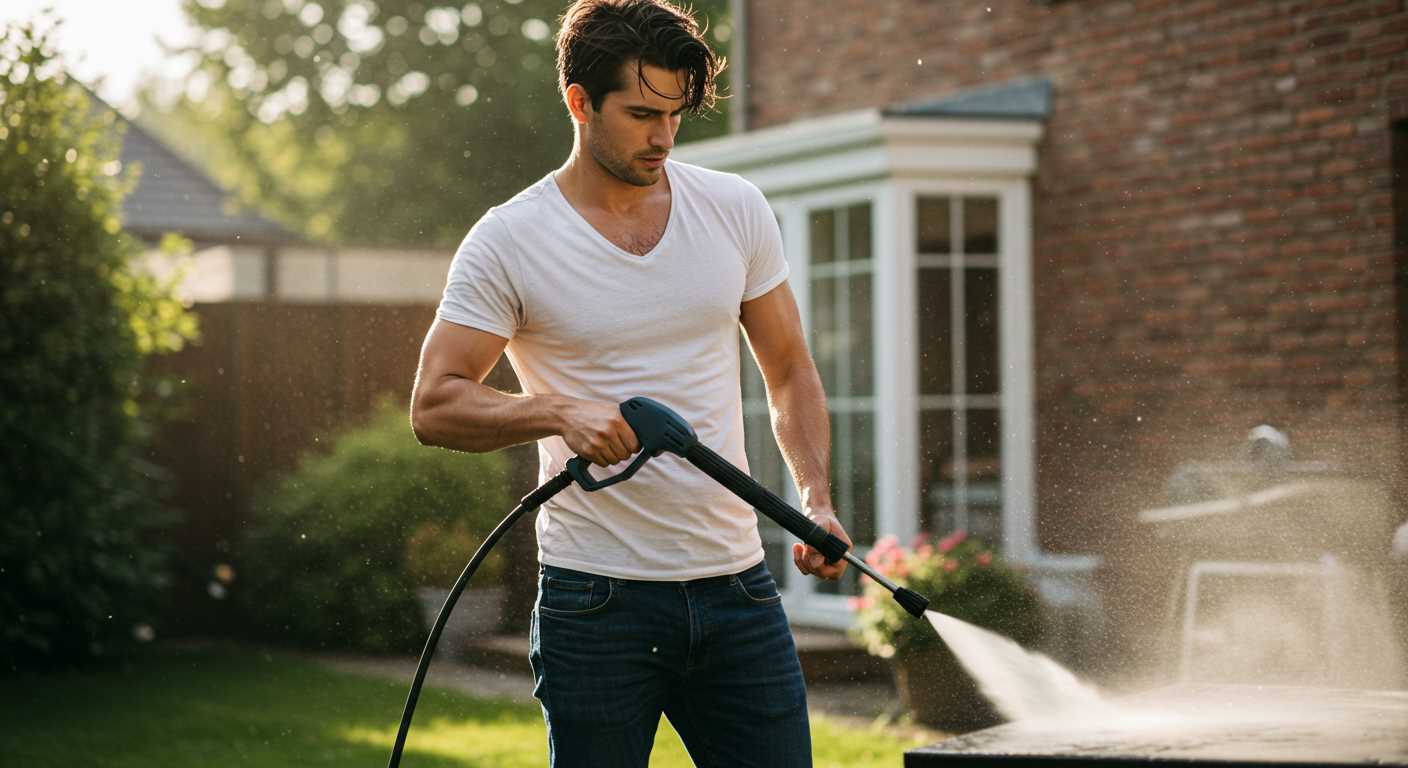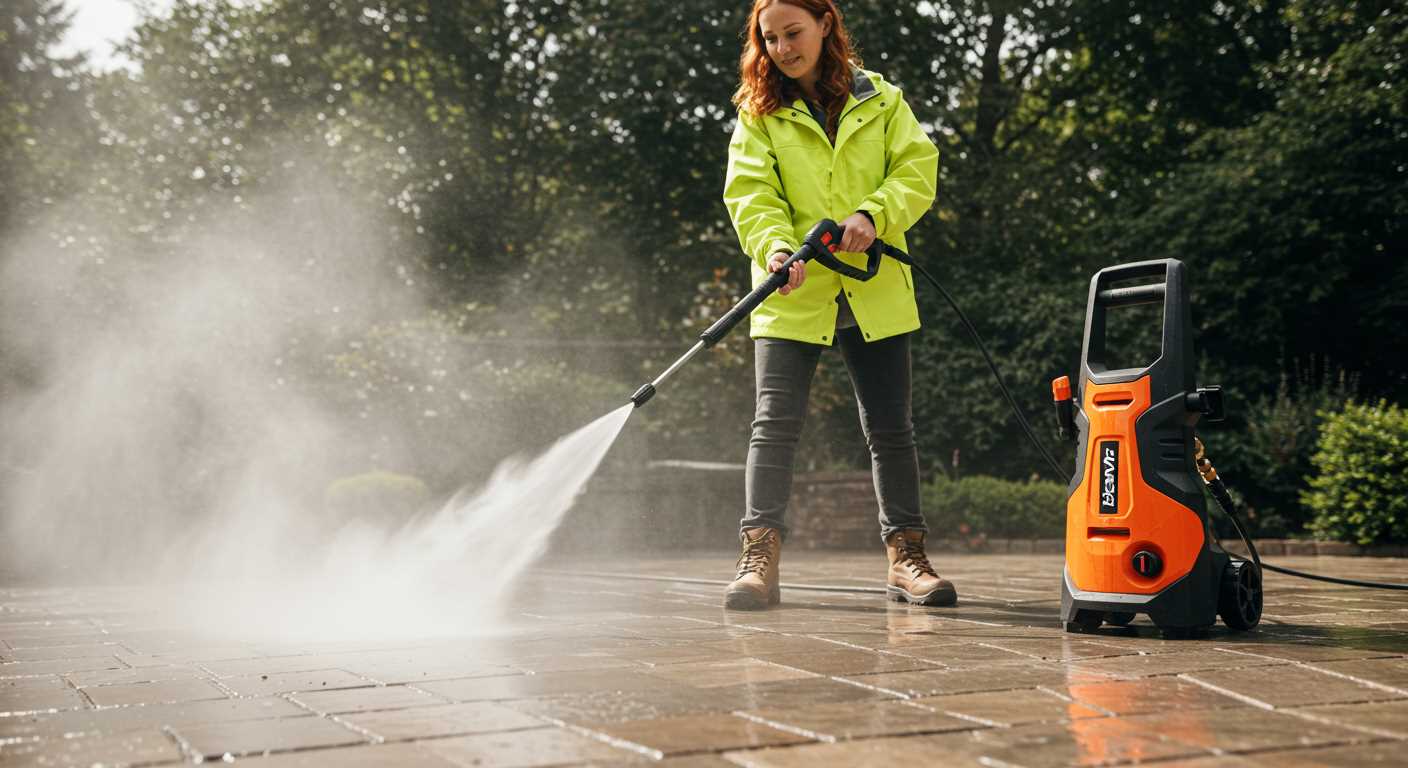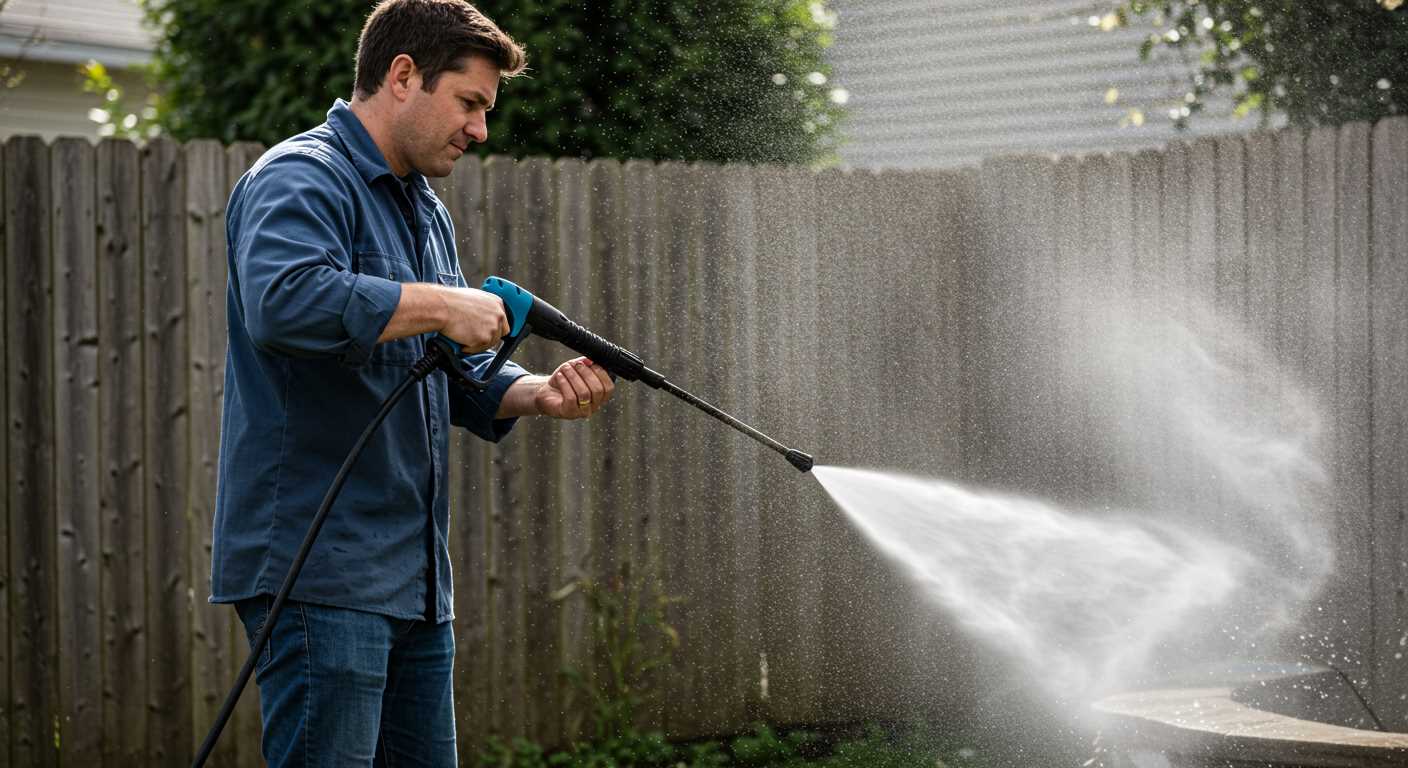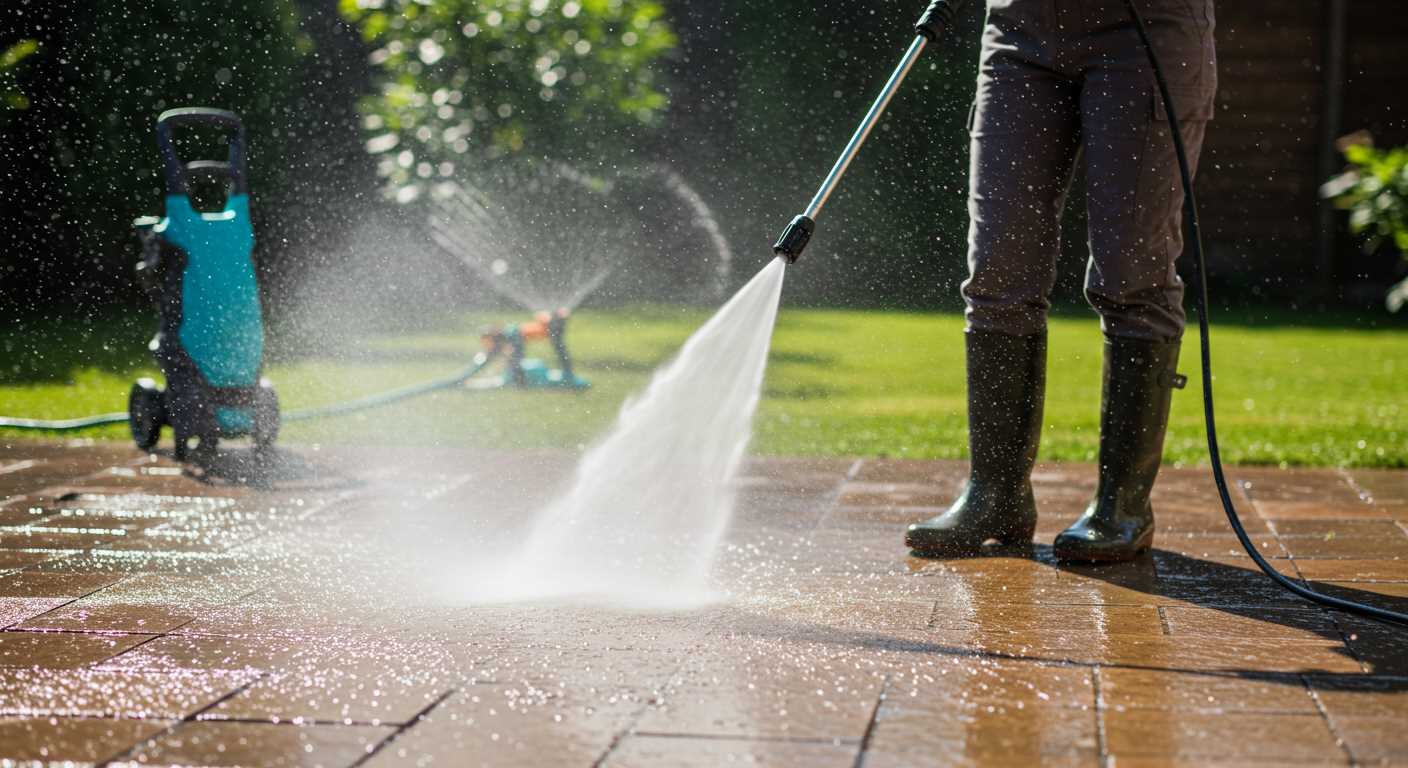



Prioritize high pressure ratings, typically measured in PSI (pounds per square inch). A machine with 2000-3000 PSI is suitable for most home tasks, while professional-grade options may exceed 4000 PSI. This metric directly correlates to the cleaning power, making it pivotal in your choice.
Consider the flow rate, indicated in GPM (gallons per minute). A higher GPM rating means faster cleaning, as more water is delivered during use. A range of 1.5 to 2.5 GPM is ideal for residential applications, promoting efficiency and effectiveness with fewer passes.
Evaluate the design and mobility, especially if tackling larger areas. Look for machines equipped with wheels for ease of transport. A lightweight, ergonomic model will reduce fatigue during extended use, enhancing the overall experience.
Explore the power source options available: electric versus gasoline. Electric units are quieter and require less maintenance, while gas-powered machines generally offer more robust performance for heavy-duty tasks. Your specific needs will dictate the best choice here.
Don’t overlook the accessories and attachments included. Adjustable nozzles, surface cleaners, and detergent tanks can significantly widen your machine’s utility. Assess the compatibility of additional accessories to ensure versatility for various cleaning tasks.
Key Features to Evaluate for a Pressure Cleaning Unit

Prioritising design and functionality can greatly influence satisfaction with your choice. Focus on the following attributes:
- Water Pressure (PSI): Select a model with an appropriate pressure rating for your cleaning tasks. For light jobs, 1300-1900 PSI is adequate; opt for 2000-3000 PSI for tougher applications.
- Water Flow Rate (GPM): The higher the flow rate, the faster the cleaning process. Aim for a machine that delivers at least 1.5 GPM for general use.
- Motor Type: Decide between electric and gas. Electric models are quieter and more suitable for smaller tasks, while gas units offer portability and power for larger jobs.
- Weight and Portability: If mobility is important, select a lightweight option or one with wheels. Consider the balance between performance and ease of transport.
Assessing these core aspects lays the groundwork for making a well-informed decision.
Attachments and Accessories
Evaluate the included accessories, as they enrich versatility. Review functionalities such as:
- Nozzles: Look for models that offer multiple nozzle types. Each nozzle provides varying spray patterns to tackle different surfaces.
- Cleaning Solutions: Some units come equipped with detergent tanks, enhancing cleaning efficiency for stubborn stains.
- Extension Wands: Aim for options that include extendable wands for hard-to-reach areas, ensuring thorough cleaning.
Having a well-rounded set of attachments can significantly enhance your cleaning experience.
Durability and Warranty

Assess build quality carefully; materials matter greatly for longevity. Seek out strong components and user reviews that attest to resilience. Also, review warranty terms:
- Warranty Period: A lengthy warranty indicates the manufacturer’s confidence in their product; typically, two years minimum is advisable.
- Customer Support: Determine if the manufacturer provides adequate support and replacement parts availability.
Ensuring robustness and support can save significant hassle down the line.
Noise Level

Consider the operational noise. Electric models tend to operate more quietly; if working in residential areas, opt for quieter options to avoid disrupting neighbours.
Budget and Brand Reputation
Establish a budget suitable for your requirements. While cheaper models may serve basic needs, investing in reputable brands often yields superior performance and reliability. Research customer feedback and expert reviews for informed comparisons. Choose wisely to maximise your investment.
Understanding Pressure Ratings and Their Importance
Choosing the right condition in which to operate your cleaning device starts with understanding the measurement system used: PSI (pounds per square inch) and GPM (gallons per minute). High PSI indicates strong force, making it suitable for tough tasks such as stripping paint or removing stubborn grime from concrete. For general cleaning, a PSI range of 1500 to 3000 is usually sufficient.
At the same time, GPM reflects the volume of water output and plays a crucial role in how efficiently the machine cleans. Higher GPM levels allow for quicker cleaning, as they enable more water to be applied to the surface, increasing the rinsing effect. A balanced approach–considering both PSI and GPM–is vital; a higher PSI without adequate GPM may not provide optimal cleaning results, leaving dirt behind.
Deciphering the Ratings
.jpg)
Understand that not all ratings are equal. Some manufacturers may exaggerate numbers, so always check for a third-party certification, like the American National Standards Institute (ANSI). This ensures the pressure ratings reflect true machine capabilities, thus offering transparent product comparisons.
Always match the pressure rating with the cleaning project at hand. For delicate surfaces such as wood or vehicles, lower PSI–typically around 1200 to 1900–is advisable to avoid damage. Conversely, tougher jobs like driveways can handle up to 3000 PSI or more. Knowing the appropriate balance safeguards both the equipment and the surfaces being cleaned.
The Role of Nozzles
Another factor affecting effective pressure application is the nozzle type. Different nozzles produce various spray patterns, allowing customization based on the task at hand. Narrower spray angles yield higher pressure but at the cost of coverage area, making them ideal for concentrated cleaning. Wider angles offer less force but cover more ground, which is beneficial for large surfaces.
In summary, understanding pressure ratings and their impacts on performance enhances selection. Assess each task’s requirements regarding PSI and GPM, confirm the accuracy of the ratings, and factor in nozzle versatility to ensure satisfaction with your purchase. This strategic approach truly maximises both the utility of the machine and the quality of your cleaning projects.
Choosing the Right Power Source: Electric vs. Petrol
Opt for an electric model if you need quiet operation and ease of use. This option is ideal for smaller cleaning tasks like patios, cars, and garden furniture. Typically, electric units produce lower pressure (up to 1500-2000 PSI) but are sufficient for light to medium projects.
Consider the following advantages of electric pressure washers:
- Lightweight and portable, making them easy to manoeuvre.
- Lower maintenance requirements with no need for fuel or oil changes.
- Environmentally friendly with minimal emissions.
- Perfect for residential use, providing adequate power for most household cleaning tasks.
If heavy-duty cleaning is your priority or if you’ll work in remote areas, petrol-powered models are your best bet. These machines generally deliver higher pressure (up to 3000+ PSI), enabling them to tackle tough jobs like graffiti removal or deep cleaning concrete surfaces.
Key benefits of petrol models include:
- Greater mobility due to no power cord, ideal for larger areas.
- Higher water flow rates, resulting in faster cleaning.
- More robust engines allowing for prolonged use on challenging tasks.
- Ability to run off-grid, essential for farm or outdoor applications.
Evaluate your specific tasks and preferences before making a choice. Electric machines excel in convenience for regular household chores, while petrol variants provide the power and durability required for demanding jobs.
Examining Flow Rate and Its Impact on Cleaning
The flow rate, measured in litres per minute (LPM), plays a key role in assessing cleaning performance. A higher flow rate enables quicker rinsing of surfaces, particularly on large areas such as driveways or patios.
Consider a model with at least 6-8 LPM if tackling extensive or heavily soiled surfaces. For general cleaning tasks, a flow rate of 5-6 LPM adequately suffices. It’s important to find a balance between flow rate and pressure: too high a flow might reduce pressure effectiveness, especially on stubborn stains.
Enhanced efficiency occurs with moderate pressure and a suitable flow rate, allowing for effective dirt removal without excessive effort. Models combining flow rates of 7-10 LPM with a pressure rating of around 1200-2000 PSI are particularly suited for versatile cleaning tasks. This configuration maximises cleaning efficiency while minimising water wastage.
Additionally, the nozzle type influences how flow interacts with pressure; wider nozzles distribute water over a larger area, complementing higher flow rates for quicker cleaning. Conversely, narrower nozzles concentrate water for tougher grime, beneficial in tackling specific spots.
In summary, evaluating the flow rate is essential for achieving optimal cleaning results. Keep these details in mind to ensure an effective cleaning experience with your equipment choice.
Identifying the Necessary Nozzle Types for Various Tasks
Selecting the right nozzle is critical for achieving optimal results during cleaning tasks. Nozzle types vary significantly in angle and spray pattern, each serving specific applications. For general cleaning, a 25-degree nozzle, often considered versatile, delivers a balanced spray suitable for decks, patios, and vehicles. Aim for this option for most outdoor surfaces.
For stubborn stains, the 0-degree nozzle excels, producing a concentrated stream ideal for removing grime from concrete or brick. This high-pressure option necessitates caution as it can damage softer materials, so use it judiciously.
A 40-degree nozzle, designed for delicate surfaces, offers a wider spray and gentle touch. Perfect for washing cars, it minimizes the risk of paint damage while ensuring a thorough clean.
Choosing a turbo nozzle can greatly enhance your efficiency. This model combines the benefits of both narrow and wide angles, spinning the water jet to cover more area while maintaining high pressure. It’s perfect for large concrete areas or stone surfaces.
Lastly, consider specific attachments like soap nozzles that provide a wider spray suited for foam application. These nozzles can make applying cleaning solutions more effective.
Always review the manufacturer’s guidelines for each nozzle type to match your tool’s specifications, ensuring safety and effectiveness during usage. Regularly inspect nozzles for wear and tear, replacing them as needed to maintain peak performance in cleaning tasks.
Assessing Portability Features: Weight and Wheel Design

Prioritise models under 40 pounds for easier manoeuvrability. Heavier units often become cumbersome during extended use, limiting access to tight areas. My experience shows that lightweight designs enhance versatility without sacrificing performance.
Examine wheel configuration carefully. Larger wheels, typically ranging from 6 to 12 inches, significantly improve mobility across uneven surfaces. Look for a model with all-terrain wheels to navigate driveways, lawns, or gravel with ease. Pneumatic tyres offer better shock absorption and grip, making them ideal for varied environments.
Consider a collapsible or foldable handle for compact storage and transport. A telescoping handle presents a reliable solution for adjusting height and enhancing comfort during operation. This feature allows users of different statures to operate the device without strain, reducing fatigue.
Check for built-in carrying handles. These should be robust and strategically placed to facilitate lifting and moving. A well-integrated handle can make a significant difference, especially when relocating the machine between tasks.
| Feature | Benefit |
|---|---|
| Weight under 40 lbs | Enhanced portability and ease of use |
| Larger wheels (6-12 inches) | Improved mobility on uneven surfaces |
| Pneumatic tyres | Better shock absorption and traction |
| Collapsible handle | Compact storage and adjustable height |
| Built-in carrying handles | Easy lifting and transportation |
Evaluating these features ensures a convenient experience, maximising efficiency and reducing physical strain during tasks. Consider your cleaning environment and choose wisely to enhance overall usability and satisfaction.
Reviewing Additional Accessories and Warranty Options
Consider investing in a diverse range of attachments to enhance functionality and ease of use. Common extras include surface cleaners for flat surfaces, extension wands for hard-to-reach areas, and brushes designed specifically for delicate surfaces. Ensure the model you choose is compatible with optional accessories to maximise versatility.
Warranty Insights
Carefully review warranty details as they provide assurance regarding the durability and performance of the unit. Standard warranties range from one to three years. Extended warranties can be beneficial, particularly for heavy or frequent use. Look for comprehensive coverage that includes parts, labour, and any defects in workmanship. An extended warranty can save on repair costs and offers peace of mind during ownership.









